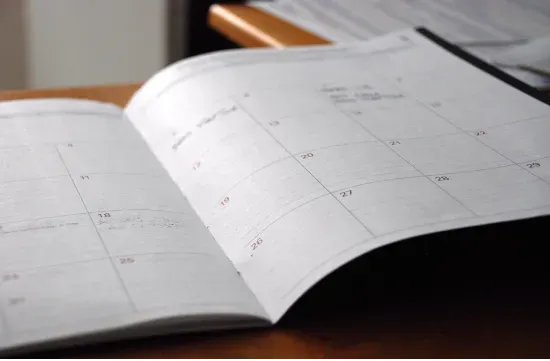First Strides to Lasting Miles: A Novice's Roadmap to Running

Embracing the sport of running can usher in a new era of health and wellness that transcends age and fitness levels. The simple act of propelling oneself forward has the power to transform not just physical health, but mental well-being too. Let's embark on this journey together, step by step, as we uncover the fundamentals of running for those who are lacing up for the first time or looking to restart their journey with fresh eyes.
Running isn't simply a form of exercise; it's a lifestyle choice that brings with it a cascade of benefits. From bolstering cardiovascular health to improving mental clarity, the rhythmic cadence of running fosters a sense of peace and achievement. Whether aiming to reduce the risk of chronic diseases or seeking the serene high of an invigorating jog, this guide aims to arm you with the knowledge to begin your running journey with confidence and joy.
Preparing to Run
Assessing Your Health
Before the rubber meets the road, it's essential to ensure the vehicle of your body is primed for the voyage. Just as a pilot performs pre-flight checks, assessing your health is your first step. Seeking medical clearance and conducting an initial fitness assessment offers a blueprint of your physical status, marking the starting line from which your progress will be measured. This due diligence is a safeguard against potential health risks and a baseline to inform a personalized running regimen that aligns with your capabilities.
The importance of this step cannot be understated. It's about building a foundation of safety, akin to placing cornerstones before construction begins. Understanding your unique health profile helps prevent overzealous strides that could lead to injury or discouragement, facilitating a running experience that is both enjoyable and sustainable.
Essential Gear for Beginners
In the orchestra of running, your shoes are the first-chair violinists—their performance is crucial to the success of the concert. Investing in a quality pair of running shoes that provide the right support can mean the difference between a harmonious run and a symphony of aches and pains. It's not merely a matter of cushioning; it's about finding a harmony between your feet and the ground they strike. Experts recommend that beginners get fitted at a specialty store where knowledgeable staff can guide you to the perfect match for your foot type and gait.
Your attire, too, plays a vital role. The clothing you choose should harmonize with the conditions in which you'll run—providing warmth against a chilly morning breeze or breathability under the gaze of a scorching sun. From sweat-wicking fabrics to reflective materials that sing a tune of safety in low light, your gear can elevate your running experience to an encore-worthy performance.
Basic Running Techniques
Warm-Up Routines
Diving into the verse of your run without a prelude of warm-up exercises is a melody bound to go off-key. Consider dynamic stretching and light cardio akin to the tuning of instruments before a performance. These activities get your blood flowing, they wake up the muscles, and help your body transition into the rhythm of running. By prioritizing a warm-up, you're lessening the risk of injury and ensuring that each step is in tune with your body's capabilities.
Effective warm-ups are like scales practiced before a recital—they prepare you for the main event. They should involve movements that mimic running motion, enhancing your range of motion and priming your muscles. This might include leg swings, walking lunges, or gentle jogging, creating a composition that prepares your body for the symphony of strides to come.
The Run-Walk Method
When the running path seems steep and the tempo daunting, the run-walk method stands out as a conductor's baton, guiding beginners through the composition. This technique, where you alternate between intervals of running and walking, serves as a bridge, helping novices build up to a full run. Just as a composer layers instruments, you'll layer periods of running with walking until the former can carry the tune on its own.
Think of this strategy as a crescendo in music—it starts softly and builds in volume and intensity. Begin with short running intervals, maybe just a minute or two, followed by longer walking breaks. As endurance and confidence grow, the walking intervals diminish until running becomes the dominant theme. This method not only eases the physical demands but also breaks the psychological barriers, creating a composition that is both accessible and uplifting.
Developing Your Running Plan
Setting Achievable Goals
In the symphony of running, goals are the high notes—the ones that require skill and practice to reach. The art of goal-setting is akin to composing a piece that challenges the musician yet is achievable with practice. Setting goals that are too ambitious can be discouraging, like a melody that's too complex for a novice. Instead, choose clear, realistic objectives that resonate with your current fitness level and gradually elevate the difficulty as your abilities improve.
These objectives can range from running a certain distance without stopping to completing a 5K. They act as signposts along your journey, guiding you and providing milestones that mark your progress. Achievable goals are motivating; they are the applause that spurs you to encore performances, each one better than the last.
Creating a Weekly Running Schedule
Consistency in running can be likened to the steady beat that underpins a rhythmic tune—it's the backbone of progress. Crafting a weekly running schedule should be like composing a piece of music, with balance and variety that keeps it interesting. A beginner's running plan might start with three days of run-walk sessions, interspersed with rest or cross-training days. It's important that this schedule sings in harmony with your life's other commitments and doesn't feel like an insurmountable crescendo.
The plan should outline the frequency of your runs, the duration of each session, and the intensity at which you'll run. As your endurance builds, you can gradually increase these elements, ensuring your symphony of runs crescendos to a triumphant finale. Remember to listen to your body's feedback—it will tell you when to push the tempo and when to dial back to pianissimo.
Advanced Running Strategies
Incorporating Strength and Flexibility Training
In the ballet that is running, strength and flexibility play supporting roles to your leading performance. Like a dancer who cross-trains to perfect their craft, a runner benefits from incorporating strength and flexibility exercises into their routine. This cross-training can take many forms, from yoga that stretches and strengthens the body, to weight training that builds the muscles supporting your running form. These exercises are the harmonious background vocals that enhance the lead singer's performance.
Strength training can include bodyweight exercises like squats and lunges or weights for more resistance. Flexibility training, on the other hand, helps maintain the range of motion necessary for a fluid running form, akin to the graceful motions of a conductor's baton. Together, they create a holistic training regimen that not only boosts running performance but also sings prevention of injuries.
Nutrition and Hydration Tips
Proper nutrition and hydration are the maestro's score—the detailed plan that ensures each note is hit with precision. Fueling your body correctly is akin to an orchestra playing in perfect harmony, each nutrient playing its part to support your performance and recovery. A balanced diet that includes carbohydrates for energy, protein for muscle repair, and fats for endurance is the opus to your running success.
Hydration, too, is a critical element of this composition. Like the delicate timing of a cymbal crash, water intake should be well-timed before, during, and after your runs. Fluids carry the melody of nutrients through your body and help maintain the tempo of your internal systems. Listen to your body's cues—they are the audience's applause guiding you to hydrate adequately for an encore-worthy run.
Overcoming Challenges
Dealing with Common Beginner’s Challenges
As with any new endeavor, challenges in running are inevitable. They are the dissonant chords that can disrupt the flow of a beginner's running melody. Pacing, for instance, is a common hurdle. Many beginners set out too fast and find themselves winded prematurely—like a sprint in what should have been a marathon. Fatigue, both mental and physical, is another high note that takes practice to reach. It's important to remember that these challenges are not barriers but rather passages in your running opus that require mastering.
To stay motivated, consider your running routine as a series of small concerts, each with its own unique setlist and venue. Some runs will feel like headline acts at a festival, while others might be more intimate gigs. But they all contribute to your growth as a performer. Embrace the variety, and when you hit a sour note, know that it's a cue to refine your technique, not a cue to exit stage left.
Safety and Health Precautions
Just as a stage manager ensures the safety of performers, runners need to heed certain precautions to stay safe and healthy. This includes understanding and listening to your body, knowing when to rest and when you're ready to increase the intensity. Running in different environments and weather conditions presents unique challenges, requiring an adaptability that is akin to a band tailoring its set to the venue.
It's wise to be conscious of your running path, to wear appropriate gear for visibility, and to remain aware of your surroundings. Just like a virtuoso who takes care of their priceless instrument, take care of your body with adequate sleep, nutrition, and hydration. Your health and safety are the foundations upon which your running performance is built.
Engaging with the Running Community
Joining Running Groups and Events
Running is often seen as a solo act, but there's a chorus of support waiting in the wings when you join a running group or participate in events. Like fans at a concert, fellow runners provide the energy and camaraderie that can push you to a personal best. These communities are founts of knowledge, offering pacing partners, training advice, and simply the shared joy of running.
The benefits of such social connectivity are comparable to the harmonies in a song—each voice enhances the others, and the result is greater than the sum of its parts. Whether it's in person or virtual, finding your community can help maintain motivation, encourage accountability, and turn the solitary act of running into a shared adventure.
Leveraging Technology for Running
In the modern era of running, technology plays a supporting role, akin to the instruments that accompany an acoustic guitar, enhancing its sound. Running apps and trackers serve as your digital coach, providing feedback on pace, distance, and heart rate, allowing you to adjust your training in real-time. They help fine-tune your performance with metrics and motivation, much like a metronome helps musicians maintain their rhythm.
These tools keep you engaged, tracking progress and celebrating milestones. They can be the virtual cheering crowd, spurring you on when the road gets tough. With the aid of technology, you can compose a running routine that is as finely tuned as any great piece of music, one that continues to evolve and inspire with every run you take.
Now, with the stage set and the audience waiting, it's your time to shine. Step out onto the open road and let the melody of your feet against the pavement sing the song of a runner. Remember, every journey begins with a single step, and every concert with a single note. Yours begins here, with "Running for Beginners: The Essential Guide."





